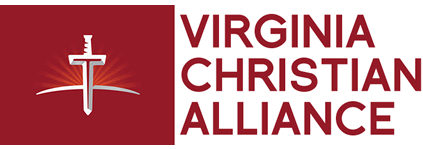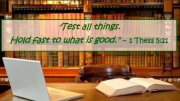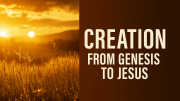Playback speed:
By Sandy Szwarc
© Szwarc 2025
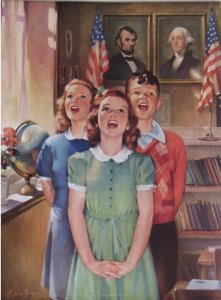 Older Americans may remember their school classrooms with portraits of George Washington and Abraham Lincoln on the wall; the American flag in the corner; a Bible on the teacher’s desk; and the school day beginning with a prayer, the Pledge of Allegiance, and singing of a patriotic song.
Older Americans may remember their school classrooms with portraits of George Washington and Abraham Lincoln on the wall; the American flag in the corner; a Bible on the teacher’s desk; and the school day beginning with a prayer, the Pledge of Allegiance, and singing of a patriotic song.
Image Credit: “Of Thee I Sing” by Frederick Sands Brunner (1886-1954) on the 1949 Thomas D. Murphy Co. Arts Calendar
The original Pledge of Allegiance had been drafted by retired Civil War Army Captain, George T. Balch, in 1885 while he was auditor of the New York City Board of Education. This first Pledge read:
“We give our heads and hearts to God and our Country; one Country, one language, one flag!”
Captain Balch was devoted to promoting patriotism in school children, instilling in them an emotional “personal relation to this great nation as a future citizen,” along with an intellectual “understanding and appreciation of the underlying principles of our government and thus become firmly grounded in its political faith.” In 1889, he wrote a teachers’ manual, Methods of Teaching Patriotism, first given to the Children’s Aid Society. It began with a quote from Henry Ward Beecher on the meaning of our flag:
“Our flag means then all that our fathers meant in the Revolutionary War; it means all that the Declaration of Independence meant; it means all that the Constitution of our people organizing for justice, for liberty and for happiness meant. Our flag carries American ideas, American history and American feelings. Beginning with the Colonies and coming down to our time, in its sacred heraldry, in its glorious insignia, it has gathered and stored chiefly this supreme idea: Divine right of liberty in man.
Every color means liberty, every thread means liberty, every form of star and beam of light means liberty. Not lawlessness, not license, but organized institutional liberty — liberty through law, and laws for liberty.
Accept it then, in all its fullness of meaning. It is not a painted rag. It is a whole national history. It is the Constitution. It is the Government. It is the emblem of the sovereignty of the people. It is the nation.”
He and early teachers strived to mold young people into the highest concept of citizenship – patriotism − with good social, moral and political character. In fact, building character and moral virtues was once seen as the most important role of education. America’s founders understood that without a national morality of virtue and goodness, a representative republic form of government could not survive.
The Bible is, in every respect, America’s fourth Founding Document. It held the core principles of all of our Founding documents. In fact, it shaped the nation’s entire culture and way of life through most of the 19th Century.
The Bible also had the key role in home schooling and school curriculums throughout America’s early history, promoting character, responsibility and achievement. The Bible was the early primer for most children. As grammar schools grew in number after the first Puritan education law in 1647, the New England Primer, known as the “Little Bible of New England,” became the first school textbook for children. For more than 150 years its lessons, prayers, and Bible stories helped to lay foundation of American values upon which our country would be built.
Noah Webster, considered the Father of American Education (or the Father of American Scholarship and Education), believed education was useless without the Bible, that all Americans needed to speak the same language, and that the Christian principles of liberty and self-governance under God were essential for a free people. Even the root meaning of words in his first comprehensive American Dictionary in 1828 were defined according to their use in Scripture, with over 6,000 Bible references.
McGuffey’s Eclectic Readers were first introduced in 1836 and became the most widely circulated textbooks through the 19th Century. At least 120 million copies were sold between 1836 and 1960 – comparable to the Bible and Webster’s Dictionary.1 Ohio professor and preacher, William Holmes McGuffey, developed the readers to be progressively more difficult as the students advanced to the next level.
 While teaching phonics and reading skills, the books captured young imaginations and were a primary source for learning history, philosophy, great literature, and science. The Readers were filled with stories of strength, character, goodness and truth. Most of all, they highlighted the teaching of character: “industry, thrift, temperance, kindness and virtue.”
While teaching phonics and reading skills, the books captured young imaginations and were a primary source for learning history, philosophy, great literature, and science. The Readers were filled with stories of strength, character, goodness and truth. Most of all, they highlighted the teaching of character: “industry, thrift, temperance, kindness and virtue.”
McGuffey’s early readers are recognized as shaping America’s spirit and standards of morality for over a century. According to Project Gutenburg’s history of the Readers:
“The school readers are the proper and indispensable texts for teaching true patriotism, integrity, honesty, industry, temperance, courage, politeness, and all other moral and intellectual virtues. In these books every lesson should have a distinct purpose in view, and the final aim should be to establish in the pupils high moral principles which are at the foundation of character.”
Henry Ford, one of America’s most successful inventors and entrepreneurs, was among the last generation of children to be educated by McGuffey Readers. They had a big influence on him and he had a collection of 468 copies of 145 different editions. Ford strongly believed in McGuffey’s educational principles, which he continued in the Edison Institute Schools that he himself later founded.
The early McGuffey Readers were strongly religious in their teaching, while nondenominational, although their religious focus would wane in later revisions. As John A Stormer explained in his book, None Dare Call It Education:
“The world of the McGuffeys was a world where no one questioned the truths of the Bible, or their relevance to everyday conduct.”
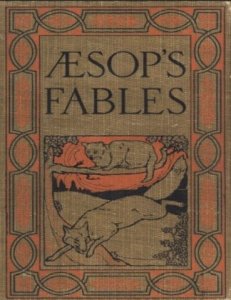 During America’s first two hundred years, one of the most beloved children’s story books was Aesop’s Fables, which also helped teach simple moral lessons. Each story ended with a moral to the story. Aesop lived in ancient Greece and is believed to have been born a slave around 650 BC and later got his freedom. He was a collector of parables and fables, with over 700 accredited to him, and each gave a virtuous moral lesson.
During America’s first two hundred years, one of the most beloved children’s story books was Aesop’s Fables, which also helped teach simple moral lessons. Each story ended with a moral to the story. Aesop lived in ancient Greece and is believed to have been born a slave around 650 BC and later got his freedom. He was a collector of parables and fables, with over 700 accredited to him, and each gave a virtuous moral lesson.
Aesop’s Fables was first printed in English in 1485 and was initially used by adult teachers, ministers and speech-makers until John Locke in 1693 recognized their special value for children. Multiple versions, many richly illustrated, would become regular bedtime stories and important children’s literature in schools to help tempt young people to read, think, and cultivate creative intellect.
 George Washington also used Aesop’s Fables in his writings and to teach and inspire children. Two copies were listed among his property in 1759. George Washington himself would also become the inspiration for one of the most endeared parables in American history. Millions of children have heard the story of George Washington who cut down his father’s cherry tree at the age of six. The degree of truth and embellishment in this legend will never be known for certain but is entirely possible to have been passed down by an eye witness.
George Washington also used Aesop’s Fables in his writings and to teach and inspire children. Two copies were listed among his property in 1759. George Washington himself would also become the inspiration for one of the most endeared parables in American history. Millions of children have heard the story of George Washington who cut down his father’s cherry tree at the age of six. The degree of truth and embellishment in this legend will never be known for certain but is entirely possible to have been passed down by an eye witness.
Washington was, in fact, documented to have been a good role model for young people in his day. As a boy growing up on the family farm, he was unusually polite and well-behaved, responsible and hard working, having lost his father when he was only eleven years old. While a teenager, he was appointed the public surveyor by Lord Fairfax and established a reputation for fairness, honesty, dependability, and hard work.
 The cherry tree story was used to show children the moral character of America’s first President and teach the importance of truth, while simultaneously teaching parents patience and love. Washington would never tell a lie in the parable, and bravely told his father the truth, resulting in honor and his father’s love. It’s hard to argue any evil in that.
The cherry tree story was used to show children the moral character of America’s first President and teach the importance of truth, while simultaneously teaching parents patience and love. Washington would never tell a lie in the parable, and bravely told his father the truth, resulting in honor and his father’s love. It’s hard to argue any evil in that.
I still remember my grade school math class sharing the George Washington cherry tree story. My teacher’s lesson included a cherry cake recipe which was the first cake I ever baked.
Parables have been part of rich folklore and oral traditions for thousands of years. Even a few of the fables in Jesus’ teachings appeared to have used the imagery of Aesop’s Fables, such as the wolf in sheep’s clothing (Matthew 7:15) and reed swaying in the wind (Luke 7:31). Jesus, however, used story-telling more profoundly to show His truth and the way of salvation, to give hope and to give warning.
Yet today, Bibles are being removed from schools, under false claims of First Amendment violations; our Founding Fathers demonized; American patriotic symbols absent; and the cherry tree legend “debunked.”

Classrooms are more likely nowadays to be adorned with BLM and rainbow flags, bulletin boards paying tribute to LGBTQ and Marxist figures, and hosting drag queen story time.
And none of it was by accident
None Dare Call it Treason
The organized reform of American education to create “a new social order” was chronicled by John A. Stormer (1928–2018). He was an American pastor and Christian school superintendent and Christian author, who wrote a monumental book in 1964, titled None Dare Call It Treason.2
While self published in his Missouri basement under the Liberty Bell Press label, this incredibly researched book sold over seven million copies and remains one of the most important books on American history. It is attributed with beginning the conservative Christian movement and personally impacting Ronald Reagan who is said to have kept a copy on his desk during his Presidency.
This historic book is even more important to understand today. It is a must read.
 In this book, Stormer warned of the communist-Marxist (i.e. “globalists“) takeover of America through a carefully orchestrated revolution, working from within. They began in the late 1880s, infiltrating all of American society, politics, government, culture, and education.
In this book, Stormer warned of the communist-Marxist (i.e. “globalists“) takeover of America through a carefully orchestrated revolution, working from within. They began in the late 1880s, infiltrating all of American society, politics, government, culture, and education.
Stormer begins his book with the origin of Communism and historical figures like Karl Marx, Fidel Castro, Joseph Stalin, and Vladimir Lenin; and then identifies Communists who came into high U.S. government posts from such prestigious schools as Harvard Law School and Northwestern University. About half of the total Communist party was in New York state when Stormer wrote his book. By 1946, 71% of the Communist party had consisted of white collar workers, professionals and housewives.
“Communism is a disease of the intellect,” he wrote, adding:
“It promises universal brotherhood, peace and prosperity to lure humanitarians and idealists into participating in a conspiracy which gains power through deceit and deception and stays in power with brute force. Communism promises Utopia.
It has delivered mass starvation, poverty, and police state terror to its own people and promoted world-wide strife and hatred by pitting race against race, class against class, and religion against religion. Treason, terror, torture…spread communist brotherhood, peace and social justice around the world…It is a conspiracy in which hate-driven men participate.”
Marx was a self-proclaimed “scientist,” he explained. But his “scientific” theories weren’t scientific. They revolved around the core tenet that “there is no God.”
“When communists deny God, they simultaneously deny every virtue and every value which originates with God. There are no moral absolutes, no right and wrong. The Ten Commandments and the Sermon On The Mount are invalid.”
Morals are turned upside down. What is black is white. What is wrong is right. Man has no soul, no conscience. “A Communist who would refuse to lie, cheat, steal or murder to aid the socialist movement is immoral.”
After Marx’s death in 1883, his theories were embraced by the Fabian Society and the Bolshevik movements. The Fabians were planted in America in the late 1880s and Socialist Societies formed at leading American universities and among professors at Harvard, Princeton, Columbia, New York University, and the University of Pennsylvania. Socialists were found among theologians, Supreme Court Justices, entertainment industry, newspapers, Senators and Congressmen, U.S. Treasury, the State Department, and Presidents.
Stormer tells of 400 American soldiers, who’d been in Red Chinese prisons, after the Korean war ended in 1953 and how these “products of a supposed Christian nation had lost all concepts of decency, all sense of concern for their fellow man.”
In studying how that happened, Army psychiatrists learned that “indoctrination and re-education” was accomplished in simple discussion periods. No drugs, torture or hypnotic techniques were used, just subtle pressure for conformity. Books and texts were used that “emphasized all that was bad in America” and this simple “brainwashing” resulted in one-third of American POWs in Korea succumbing and doing everything the Communists wanted.
The Communists had observed something else. The younger soldiers were the ones most susceptible to indoctrination, while those over 30 weren’t.
Back at home in the states, Stormer wrote, efforts of Korean collaborators − the Communists − had succeeded:
- in doubling the crime rate – with crime increasing five times faster than the population after 1957,
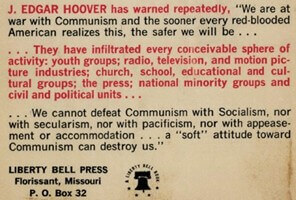
- tripling the rate of illegitimate births between 1940-1960,
- and had “ provided a market for an unprecedented volume of filthy and indecent literature – and permit much of it to be displayed openly in newsstands, family drug stores, and distributed through the U. S. mails. Divorces have skyrocketed, alcohol consumption climbs, and there is increasing narcotics use and addiction. These failures are products of American schools, churches, and homes.”
The majority of Americans, like those young Korean soldiers, hadn’t become Communists, but had simply become complacent. They did nothing. As an Army Major pointed out:
“[T]he communist ‘brainwashing’ in Korea wasn’t designed to make communists out of Americans. If it succeeded in making them ‘go along,’ it did its job. Similarly, communists aren’t interested in making all Americans, or any sizeable segment of them, communists. If Americans just “go along” and do nothing, communism will win without firing a shot.”
With the technique of how to successfully brainwash young soldiers now proven, they had their blueprint to apply it in earnest to America’s school children.
Part Four will look at how school textbooks and curriculums were purposely used to transform America’s youth to socialism, rather than patriotic Americans. If you missed Parts 1 and 2, check them out here:
Part 1 American Immigrant a Century Ago: https://vachristian.org/the-american-immigrant-one-century-ago/
Part 2 American Patriotism Time Travel: https://vachristian.org/american-patriotism-time-travel/
Reference
- Still used by homeschooling parents today, McGuffey’s Eclectic Readers are available for free at: https://www.happyhomeschoolmom.com/mcguffeys-eclectic-readers-free-pdf-downloads/
- Archived copy of None Dare Call it Treason is available free at: https://archive.org/details/StormerJohnNoneDareCallItTreason/page/n1/mode/2up
***
Sandy Szwarc, BSN, RN, retired emeritus, has been a researcher and writer for more than forty years. She writes on a wide range of topics – science, health, medicine, diet, energy, medical ethics, and more − always returning to discernment, testing all things against evidence and sound science, and most of all guided by God’s Word. She has recently resumed blogging at her new site: https://junkfoodscience.weebly.com/
